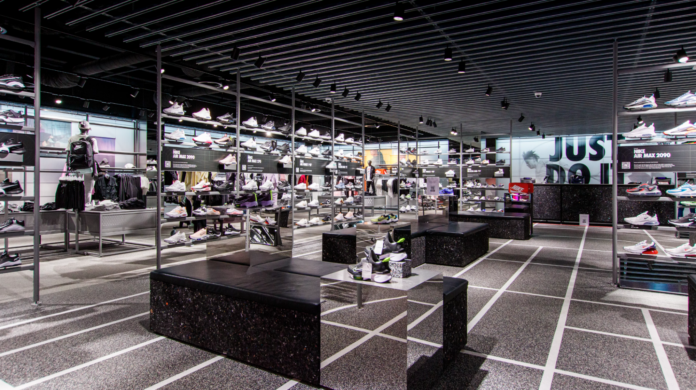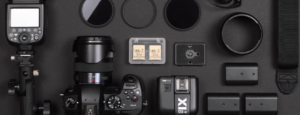Retail is an industry which offers many possibilities for digital signage. It can be used to increase sales, build a stronger connection to the local community, and boost employee morale. Of course, it sounds lovely to hear these goals can be achieved, but it’s even more useful to see specific ways to achieve them. Let’s get into it and examine twenty uses for digital signage in retail!
1. Greetings!
Right at the beginning, set up a welcoming message for shoppers by the entrance to the store. These greetings may trigger automatically as they detect movement. Or, in case you have high foot traffic making a trigger redundant, set up a display to constantly rotate through a set of friendly greeting messages and visuals.
2. Product promotion
Prominently display your featured products through digital signage screens in-store and at the storefront. Product promotion is most valuable if you’re familiar with the interests and expectations of your audience. Thus, feature products based on time of year, availability, or to test out if there is an interest in them.
3. New arrivals or upcoming products
As new products arrive, push them to the forefront to see how the consumer base responds. You may also consider using digital signage to build up excitement surrounding an upcoming product that is not yet available, or variations which have been frequently requested. If they can be pre-ordered, even better!
4. Additional product information
Depending on the product in question, consumers may want to know additional information which goes beyond what fits on a label. This is important in food, tech, or fashion industries. List nutritional values, important product features consumers are looking for, as well as different colors and styles of the product available. Providing often requested information will ease the burden for staff.
5. Product comparisons
In cases where there are similar products and only the price difference sticks out to the customer, use digital signage to explain why the price difference exists. Furthermore, if consumers can compare any two items, they will be more willing to upgrade from an item they may have already. You may even include suggestions to provoke upsells.
6. In-store ads
Digital signage in retail is excellent for any kind of advertising. This can include your own ads for services, products, or subscriptions. But it’s also useful for third-party advertising which can provide an additional revenue stream.
7. Interactive product demos
Product demos are a powerful way to support shopping choices. The simplest way of presenting one would be to set up a video to play near the product. To take it up a notch, let the consumer trigger the video on demand, displaying detailed information about the product and the way to use it. In case of more complex products with greater features, consumers will want to focus on certain uses over others.
8. Loyalty programs
Set up displays which showcase the ins and outs of your loyalty programs and rewards. Inform your audience on how they can collect points and which products to buy to gain access to special perks. Queues and check-out areas are the best for this sort of content.
9. Cross-selling and upselling
Product demos are a great place to include information on other products that are compatible or supplemental with the product in question. For instance, if a consumer wants to buy a smartphone, they may also be interested in items such as phone cases or screen protectors.
10. Store navigation
For larger stores, navigation can be of great use for shoppers who are not regulars. Highlight the main sections of the store so they’re easy to find. For clothing, direct visitors to sections designated men, women, coats, pants, etc. If this feature is not commonly accessed, let consumers deploy it on-demand so it doesn’t needlessly fill up space at all times.
11. Seasonal campaigns
When running seasonal campaigns, it’s important everything looks put together and uniform. With digital signage, deploy your campaigns across multiple screens and add visual themes that connect them all together.
12. Social media integration
Deploy social media walls as well as other user-generated content on your displays. Tell customers where they can follow you online and even let them interact with your display via social media!
13. Event promotion
Promote any events you organize as well as local events which may be of interest to your consumer base. This is a great way to build connections in the local community.
14. Limited-time offers
Set up flash sales and limited offers occurring on specific days or even specific times of the day. As they are happening, you can set up your displays to automatically change their content to inform everyone passing by that there’s an exciting deal inside.
15. Store policies and guidelines
On the less exciting side of things, you may include any important policies and guidelines near store entrances or changing rooms. For instance that certain products may not be opened, the number of clothing items shoppers may take into the dressing room, etc.
16. Instructions and guides
For more complex items, especially ones that need to be assembled or set up properly before use, include videos which showcase this process. In the case it’s too complex or long to be shown in a short video, include a message for consumers to talk to staff for additional information or a QR code to watch the video at home when assembling the purchased product.
17. Feedback surveys and testimonials
Display testimonials from previous consumers, especially those that answer questions or provide information new consumers will appreciate. Retail digital signage is also excellent at collecting user feedback through touchscreens.
18. Employee recognition
Display the employee of the month, as well as employee birthdays and achievements. You may do this on both the internal side to boost staff morale, as well as externally for the customer base to build a more relatable and stronger connection.
19. Tips and fun facts
Depending on the particular industry you’re in, include tips on product maintenance as well as fun facts which may be of interest. These fun facts can be something as general as a noteworthy use of the product, statistics collected globally, or facts about the business itself.
20. Frequently asked questions
Lastly, if the same questions keep circling your business, create an interactive FAQ display where customers can get all the information they need. This can include information on return policies, gift wrapping, product availability, payment methods, price matching, and so on.
Don’t forget that all these features can be implemented via digital signage software such as OnSign TV. You can section up your display, organize, and schedule content however you see fit. Try it out for free!
Cover image by Craig Lovelidge.








